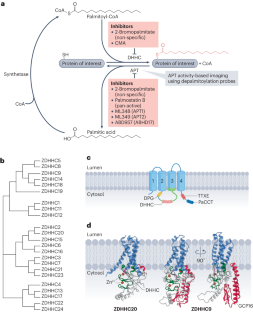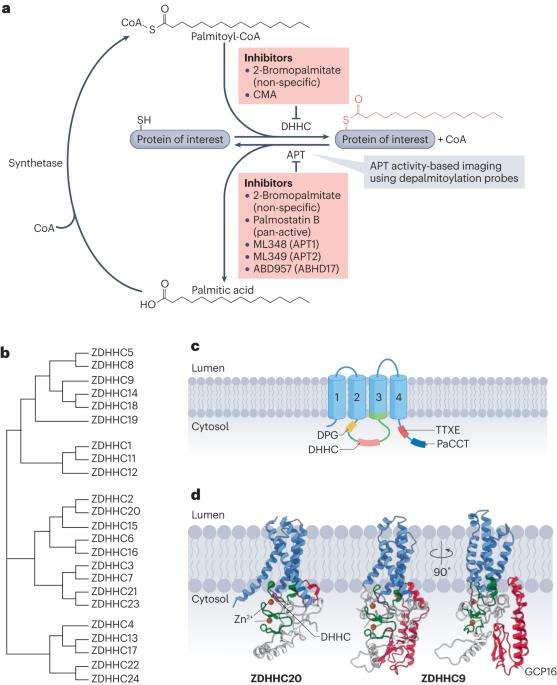蛋白质 S-酰化的机制和功能。
IF 81.3
1区 生物学
Q1 CELL BIOLOGY
引用次数: 0
摘要
过去二十年来,蛋白质 S-酰化(通常称为 S-棕榈酰化)已成为重要信号通路的重要调节因子。S-酰化是一种可逆的翻译后修饰,涉及脂肪酸与蛋白质的连接。维持蛋白质 S-酰化和脱酰化之间的平衡对各种细胞过程都有深远影响,包括先天免疫、炎症、葡萄糖代谢、脂肪代谢以及大脑和心脏功能。本综述概述了目前对 S-酰化和脱酰化酶的了解、它们通过复杂的多层机制进行的时空调控,以及它们对蛋白质功能、细胞过程和生理途径的影响。此外,我们还探讨了蛋白质 S-酰化紊乱如何与从癌症到自身炎症性疾病和神经系统疾病等多种疾病相关。本文章由计算机程序翻译,如有差异,请以英文原文为准。


Mechanisms and functions of protein S-acylation
Over the past two decades, protein S-acylation (often referred to as S-palmitoylation) has emerged as an important regulator of vital signalling pathways. S-Acylation is a reversible post-translational modification that involves the attachment of a fatty acid to a protein. Maintenance of the equilibrium between protein S-acylation and deacylation has demonstrated profound effects on various cellular processes, including innate immunity, inflammation, glucose metabolism and fat metabolism, as well as on brain and heart function. This Review provides an overview of current understanding of S-acylation and deacylation enzymes, their spatiotemporal regulation by sophisticated multilayered mechanisms, and their influence on protein function, cellular processes and physiological pathways. Furthermore, we examine how disruptions in protein S-acylation are associated with a broad spectrum of diseases from cancer to autoinflammatory disorders and neurological conditions. Protein S-acylation is involved in many pathophysiological processes. Here, Mesquita et al. discuss the structure, function and regulation of S-acylation and deacylation enzymes and describe how this post-transcriptional modification precisely controls protein–cell membrane interactions. Potential therapeutic applications of S-acylation are also highlighted.
求助全文
通过发布文献求助,成功后即可免费获取论文全文。
去求助
来源期刊
CiteScore
173.60
自引率
0.50%
发文量
118
审稿时长
6-12 weeks
期刊介绍:
Nature Reviews Molecular Cell Biology is a prestigious journal that aims to be the primary source of reviews and commentaries for the scientific communities it serves. The journal strives to publish articles that are authoritative, accessible, and enriched with easily understandable figures, tables, and other display items. The goal is to provide an unparalleled service to authors, referees, and readers, and the journal works diligently to maximize the usefulness and impact of each article. Nature Reviews Molecular Cell Biology publishes a variety of article types, including Reviews, Perspectives, Comments, and Research Highlights, all of which are relevant to molecular and cell biologists. The journal's broad scope ensures that the articles it publishes reach the widest possible audience.

 求助内容:
求助内容: 应助结果提醒方式:
应助结果提醒方式:


